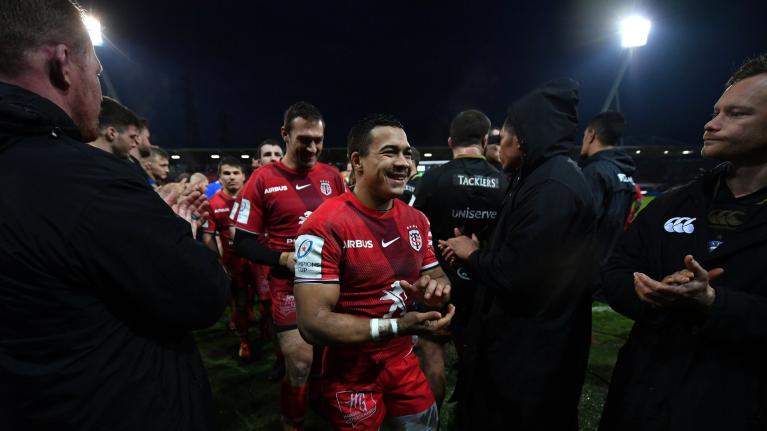The verdict is in on the Kolbe-at-No10 experiment

Rugby World Cup winner Cheslin Kolbe is fast becoming the most versatile player on the planet after his performance at fly-half at the weekend.
The Springbok winger started at No10 for Toulouse against Racing 92 in the Top 14 on Sunday and he impressed many in a narrow 30-27 loss.
With some of the most dangerous feet in the game, there was never any doubt that the 26-year-old was going to cause havoc in the middle of the field at fly-half, but there is a huge amount more required of that position.
However, his pass for Pita Ahki’s try was a glimpse of his vision as a half-back and a sign that he does not simply pose a threat as a runner, but as a distributor too.
However, it was his kicking display that received the most attention as it caught many fans off guard.
After scrum-half Sebastien Bezy went off with a head injury, the South African took on the kicking responsibilities for the team, amassing ten points through two penalties and two conversions.
Of these kicks, one was a 48-metre penalty and one was a touchline conversion, as Kolbe showed that he has many strings to his bow.
It is one thing being asked to play at fly-half, but it is another to kick so impressively, particularly when very few were aware he was capable of it.
Such was his display that he earned a place in the Top 14 team of the week and his stock as a rugby player has only risen. Accomplished across the back three, Kolbe can also play at scrum-half, so can now cover five positions across the back line.
He has even packed down at No8 for Toulouse in the past, although they were for one-off set moves, exploiting his explosive pace from the base of the scrum.
With so many players on international duty, this was a risk which Toulouse felt had to be made and Kolbe’s excursion in a new position has potential.
WATCH: Schalk Brits speaks to RugbyPass about his experiences bringing the William Webb Ellis trophy back to South Africa
Latest Comments
Great article Nic, it seems Lancaster would be a great fit for the wallabies. The attacking innovation and patterns he created at Leinster would be loved by the Aussie public. Perhaps even claimed as “the aussie way” haha. Off topic, but interested to know your thoughts on how the aussie tens are stacking up this season. Doesn’t seem like anyone is grabbing the jersey atm. And where does a veteran like JOC at the crusaders sit in the pecking order? He’s looking good, but helps having Jordan running off tour shoulder…
Go to commentsI wonder if he used his position to bully a great contract lol
Go to comments